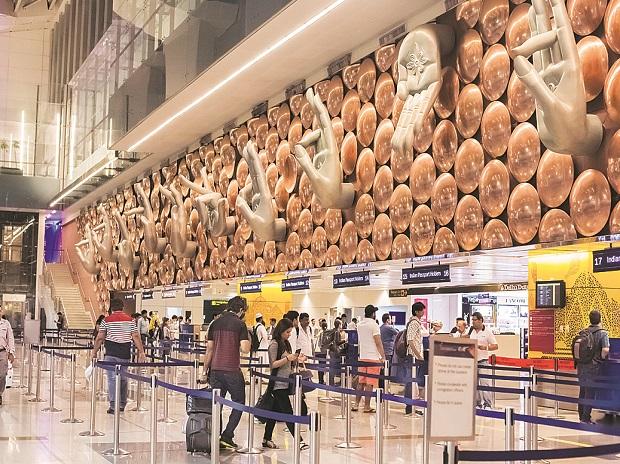Airlines can save Rs 150-180 cr by using Eastern Cross Taxiways: DIAL CEO
Airlines are likely to save around Rs 150-180 crore annually by using the Delhi airport’s Eastern Cross Taxiways that help reduce taxing time as well as fuel consumption by aircraft, according to a top official.
The Indira Gandhi International Airport (IGIA) in the national capital, operated by DIAL (Delhi International Airport Ltd), handles up to 1,500 aircraft movements daily.
In a recent interview, DIAL CEO Videh Kumar Jaipuriar said assuming 10-15 per cent of aircraft use the Eastern Cross Taxiways (ECT), it is expected that there would be saving of around 55,000 tonnes of carbon dioxide.
There can be savings of Rs 150 to Rs 180 crore for airlines by using the ECT, he said.
The ECT, which is 2.1 km long and can accommodate wide-body aircraft, will reduce the time spent on the tarmac by passengers after landing and before take-off of their flights. It was inaugurated on July 14.
Citing back of the envelope calculations, Jaipuriar said DIAL has made an estimation of how many aircraft will be using the ECT and how much of travel time will be reduced.
“Each tonne of ATF costs Rs 1 lakh and it is Rs 100 per litre… savings for airlines because of lower taxiing time is expected to be around Rs 150-180 crore,” he said.
On an average, Jaipuriar said 7-8 minutes of taxiing time is saved for an aircraft that land in the north and come to the south through the ECT.
As per DIAL, the ECT is estimated to save around 350 kg of fuel every time an aircraft taxies through the runway from RW 29R to Terminal 1 and vice-versa.
“This translates into a reduction of nearly 1,114 kilograms of CO2 emissions for each aircraft taxiing along this route. On an annual basis, the ECT is estimated to reduce emissions of approximately 55,000 tonnes of CO2 from aircraft,” it had said in July this year.
DIAL had also said 55,000 tonnes of CO2 emission is equivalent to planting about 15 lakh trees.
The ECT connects the northern and southern airfields on the eastern side of the airport and will reduce the taxiing distance for an aircraft by 7 kilometres. The distance an aircraft needs to cover after landing on the third runway and going to Terminal 1 (T1) will be reduced to 2 kilometres from 9 kilometres now.
The dual-lane ECT can handle wide-body aircraft, including A380 and B777 and B747. Each lane is 44 metres wide with a gap of 47 metres between them to allow simultaneous passage of two aircraft.
